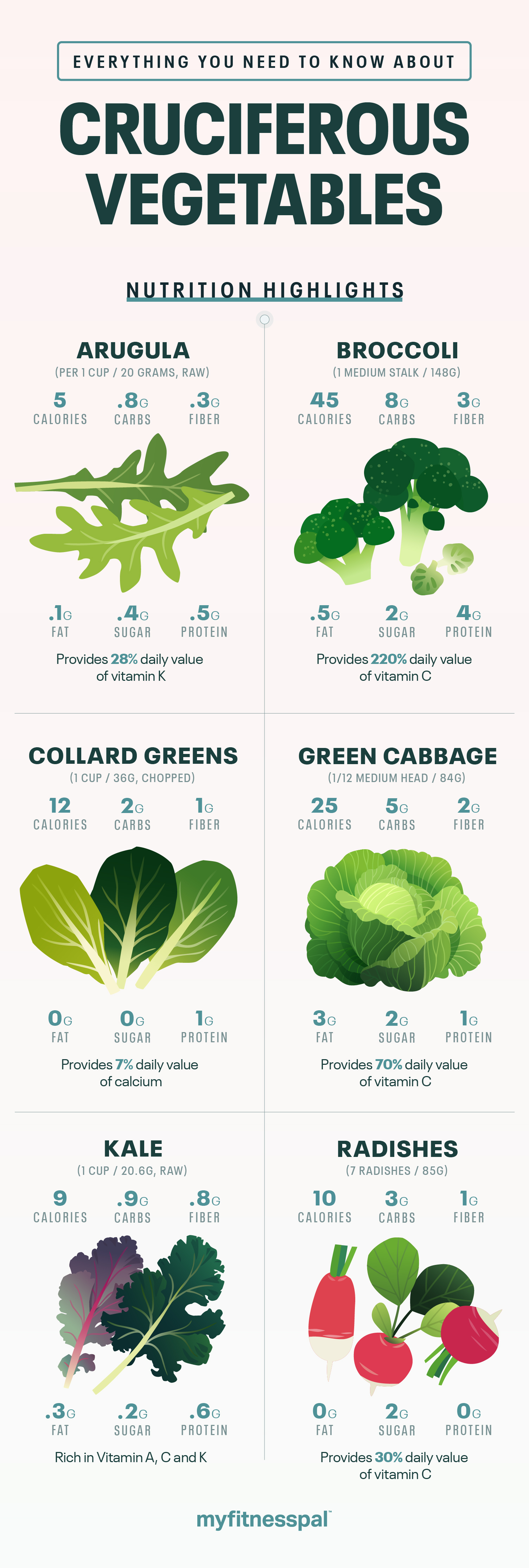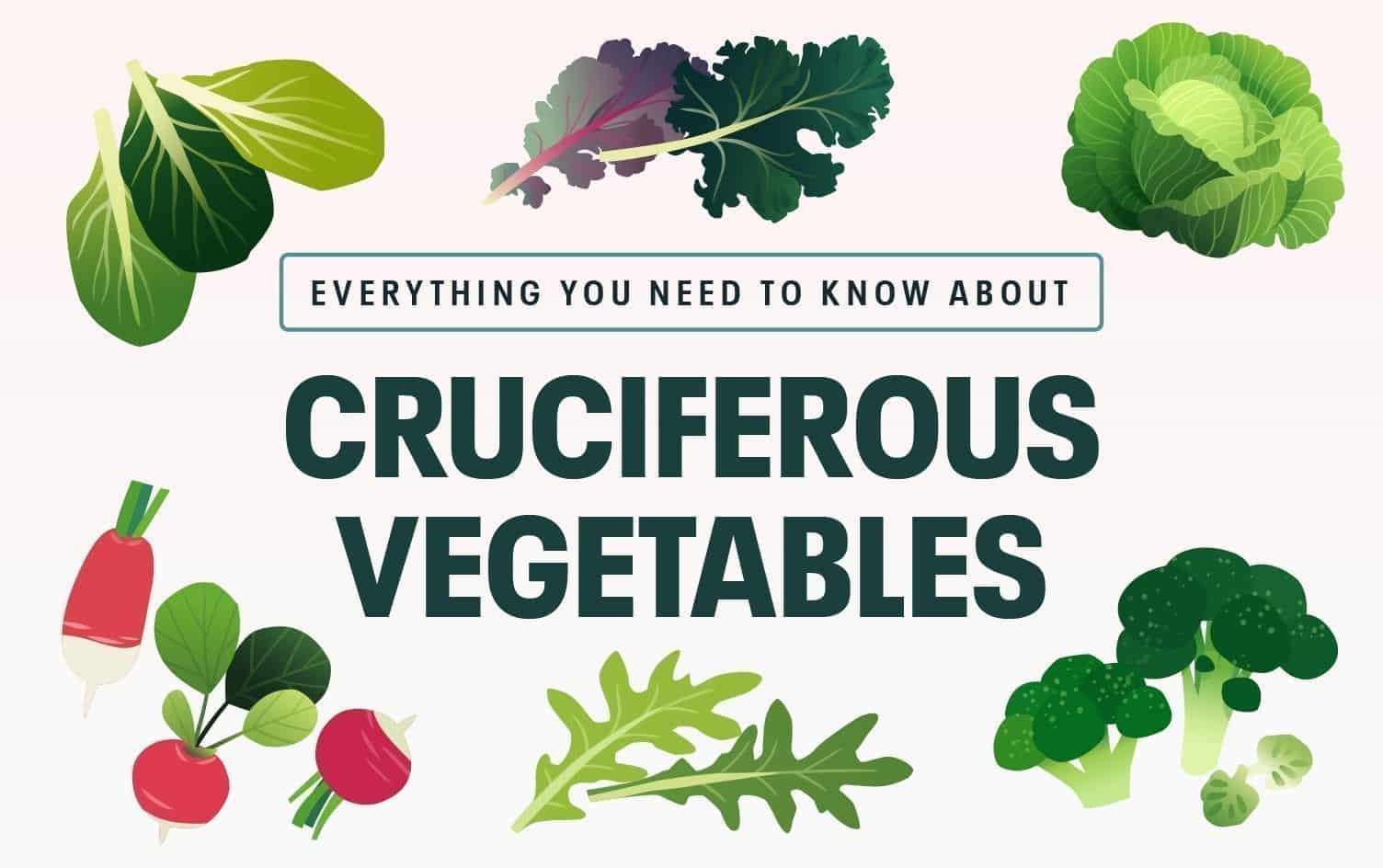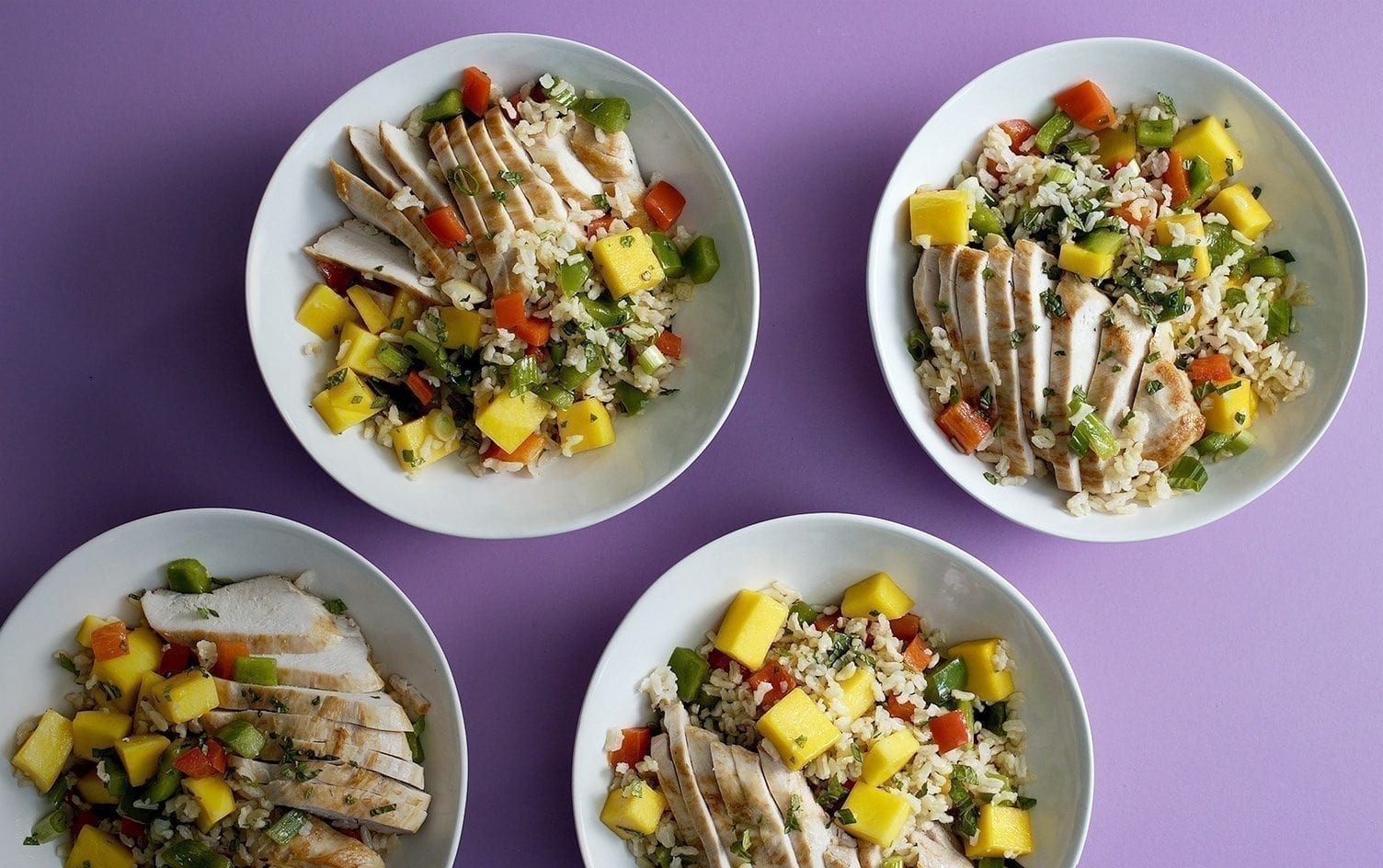Cruciferous vegetables are members of the Brassica family. They range from dark leafy greens like arugula, bok choy, kale and collard greens to multicolored cabbages, cauliflower, radishes and turnips.
Like other veggies, they’re low-calorie nutritional powerhouses filled with health-promoting phytonutrients, Vitamin C, E and K, folate, fiber and more.
According to the 2015-2020 Dietary Guidelines for Americans, you should aim to eat 1 1/2–2 1/2 cups of vegetables each day.
Looking to add more cruciferous veggies to your diet? Here’s everything you need to know, including different types to try, health benefits, how to store and enjoy them, and more.

OTHER CRUCIFEROUS VEGGIES TO EAT:
- Bok choy
- Brussels sprouts
- Cauliflower
- Daikon radish
- Horseradish
- Kohlrabi
- Mustard greens
- Purple cabbage
- Rutabaga
- Turnips
- Wasabi
- Watercress
HEALTH BENEFITS OF CRUCIFEROUS VEGETABLES
LIVE LONG AND WELL
A diet rich in vegetables could help protect your overall health and lower your risk of chronic conditions such as obesity, Type 2 diabetes and heart disease.
REDUCE CANCER RISK
Eating plenty of cruciferous veggies may lower your risk of breast, pancreatic, bladder, lung, prostate and colon cancers thanks to glucosinolates, chemicals that break down into anticancer compounds when consumed.
STAY SHARP
Phytochemicals found in cruciferous veggies help fight harmful free-radicals that cause oxidative stress linked to Alzheimer’s disease and could help slow cognitive decline as you age.
HOW TO SELECT AND STORE CRUCIFEROUS VEGETABLES
- Pick out crisp, colorful veggies.
- Remove any wilted or discolored leaves.
- If unpackaged, wrap them up in paper towels or a salad spinner.
- If they aren’t pre-washed, rinse with cold water before using.
- Store in the fridge and eat greens within five days.
WAYS TO ENJOY CRUCIFEROUS VEGETABLES
- Blend kale into smoothies and arugula into pesto.
- Toss leafy greens into salads with homemade vinaigrettes, fruits, seeds and nuts.
- Top sandwiches with a bunch of pungent greens.
- Saute greens with sauces and seasonings.
- Mix greens into pasta, soups, stews and stir-fries.
- Pickle radishes and kohlrabi.
- Roast broccoli, Brussels sprouts, cauliflower and kale to bring out the flavor.
- Cut calories by substituting cauliflower for rice or use it in a creamy sauce to cut calories and fat.
DID YOU KNOW
- Cruciferous veggies take their name from the Latin term Cruciferae meaning “cross-bearing” because their petals look like a cross.
- Before kale became a famous superfood, it was often only used as a garnish in restaurants.
- Brussels sprouts are believed to come from the city of Brussels, Belgium.
Discover hundreds of healthy recipes using veggies— from high-protein to low-carb — via “Recipe Discovery” in the MyFitnessPal app.




